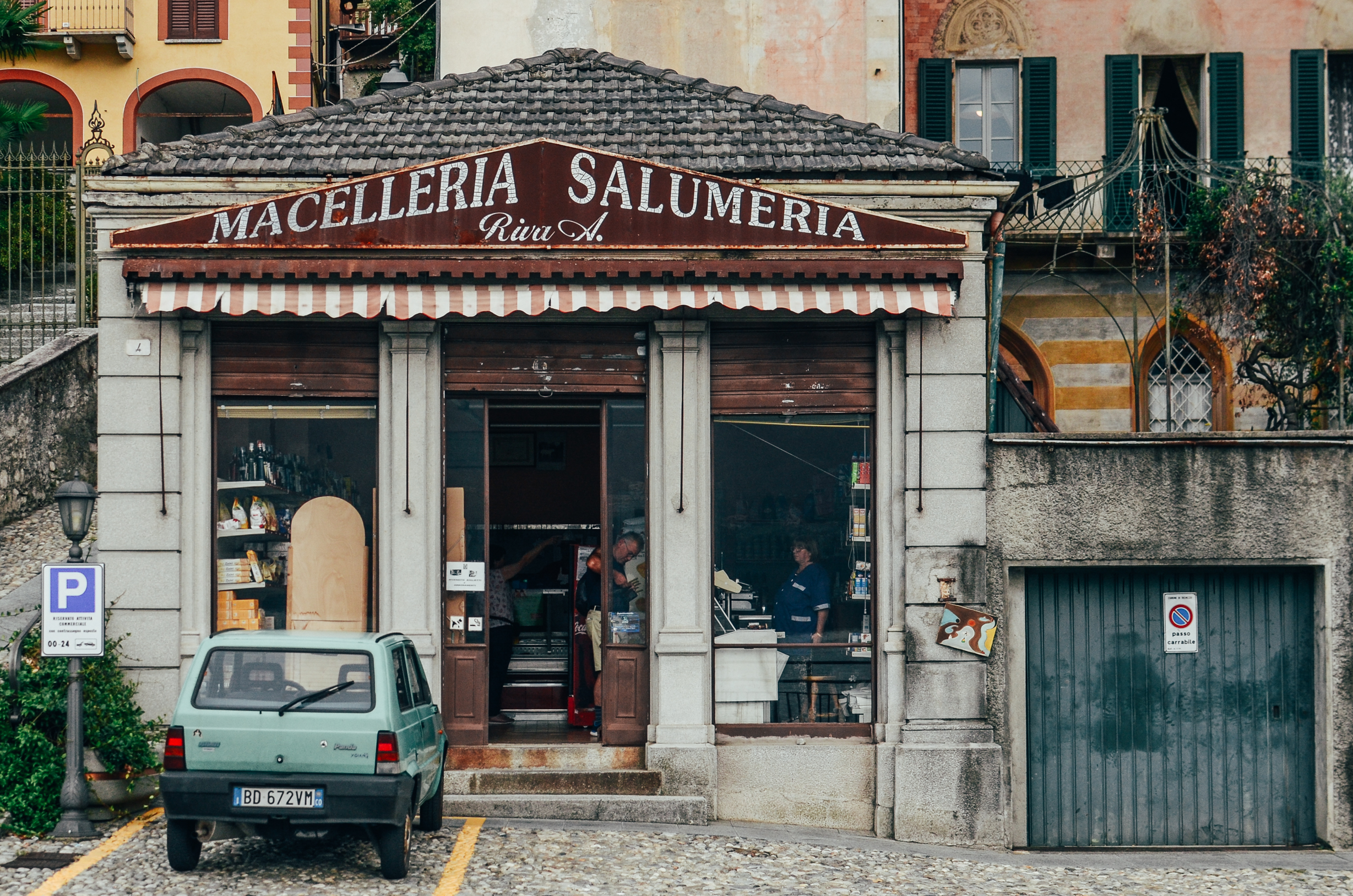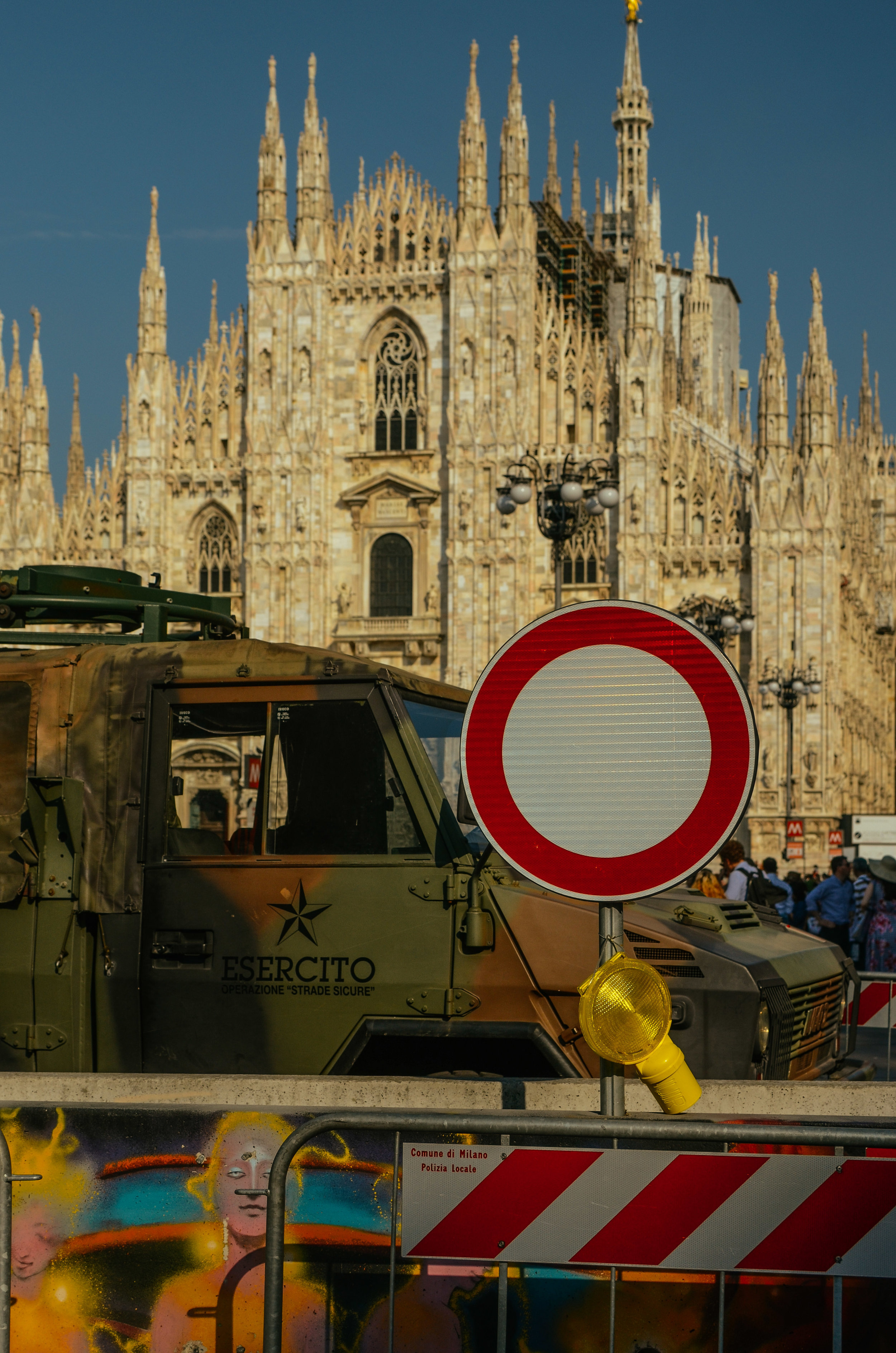Northern Italy Revisited
My recollection of Italy on my last visit, when I was 15 years old, is blurry and anticlimactic. I vaguely remember Rome, hazily recall stepping inside the Colosseum, and my fondest memory is buying an ostrich leather handbag from a street vendor in Florence. I’ve wanted to rediscover Italy for some time now; armed with a 6-year art history education, a palette well-trained by Chicago’s bursting restaurant scene, and a keenly aware taste in fashion. Greg’s Italian resume far exceeds mine; he’s driven up and down the Amalfi coast, visited Venice not once but twice, and worked for the Chicago office of the Italian Trade Commission. Not to mention, his homemade macchiatos make any polar vortex in Chicago survivable. And so, after months and months of dissecting travels plans and selfishly abandoning our usual trip to visit my family in Russia, we finally made the decision to experience Italy, together.
I never thought I would betray my deep seated loyalty to Chicago, until I met its more sophisticated cousin Milano. I could write a thesis on that town - it totally and completely encapsulated my spirit. But the other cities we visited in and around the Lombardy region also left an imprint on my heart. Northern Italy is a quietly understated paradise. There are, of course, the glitzy and famous areas like Lake Como, with its over-popularized Grand Hotel Tremezzo and touristy town of Bellagio; as well as the nearby and recently regarded Lake Garda and Lake Iseo. But some of the other smaller towns in the region are well worth a stop over, particularly if you’re equipped with a rental car and a pair of good walking shoes. Cernobbio, for example, is a bit more modest, but just as classically Italian as you would anticipate. This region overall is less penne and Sangiovese, and more branzino and Franciacorta. You’ll still find gelato shoppes practically everywhere, but the sparkling wine is lighter and less sweet, and the fashion is more neutral and custom tailored than audacious and bold.
We explored the Lombardy region as you would expect, enjoying a boat ride on the lake, visiting the famous Villa Carlotta and gardens, and shopping at local boutiques; but we also made one unexpected and unforgettable stop in the town of San Pellegrino Terme. Nestled in a corner of the Bergamo province, San Pellegrino Terme is responsible for the production of its namesake sparkling water and happens to be home of one of the oldest spa complexes in Italy. We found Terme en route from Milan to Verona, and were overjoyed to discover this quaint colorful town, seemingly uncharted, sans tourists, with sparkling water basically spewing from the taps of street fountains. The spa, and its luxurious thermal baths situated again the mountains and pine trees, did not disappoint either, but before leaving Terme behind, we stumbled upon the unoccupied and very grand, Grand Hotel. With a vividly orange facade and an imposing presence, scheduled to be renovated some time this decade, the Grand Hotel oddly and excitingly seems to resemble Wes Anderson’s Grand Budapest Hotel. All taken together, this picturesque town is well worth the detour and certainly embodies a quintessentially northern Italian spirit.
Like our unexpected discovery of San Pellegrino, our lunch break in the city of Padua completely reinvigorated our travel bug and satiated our appetite for exploring new places. Although we only planned to break for an Aperol Spritz and antipasti, I caught myself staring down each well-dressed Padovian man and woman buying fruit at the central market, breaking for a cigarette, or stopping their custom leather cruiser only to wave hello to another cyclist riding along on the cobblestone street. Padua, or Padova, is like a diet coke Milan. It’s small, urban, and well-dressed, with a nod to the history of the region expressed through the architectural arcades and well preserved buildings, and a simultaneous embrace of a relaxed and effortless atmosphere embodied by the well-dressed University of Padua students sipping coffee all around the city center. Two hours in Padua was enough for me to scout apartment prices and retirement plans. Moreover, Padua happens to be only a little more than two hours away from what is now my favorite city in the country, Milan.
It’s only appropriate that I end the recap of our Italian getaway with Milan, since almost each week after our trip, all we can think about and plan for is our return. Milan deserves a complete post of its own, but given that we packed as many destinations in this trip as we could (including Venice!), it’s appropriate that Milan stands out against and at the same time in context with the rest. Although we only spent three days in the city, I felt the emotion and full saturation of its presence in what seemed like a minute. But not a New York minute, if that’s what you’re thinking. No, Milan is unlike the Big Apple. It’s fast paced, but not rushed. Fashionable, but not obnoxious. Sophisticated, and yes, a bit snobby. But you can approach Milan in many different ways: there’s arguably the best fashion, one of the most respected contemporary art scenes in Europe, an exciting food culture, and an emerging architectural movement that’s pronounced in new neighborhood redevelopment all across town.
The Milanese exude cool, well-kept, stylish, and collected in a manner I’ve rarely experienced. Every moment, every cafe, every corner seems to be intentional and curated, but paradoxically natural and relatable at the same time. I’ve heard people say Milan is gritty and dirty, but I must have not noticed since I couldn’t stop staring at the people. People watching is a must do activity in Milan. I can’t stress that enough - inspiration is everywhere. Inspiration is the Milanese socialite sipping negronis at the popular Lu Bar. Inspiration is seeing a fellow Chicagoan Theaster Gates’ artwork at the Fondazione Prada. Inspiration is enjoying a luxury chocolate at Marchesi 1824, or strolling through Brera, window shopping at Corso Como, or hearing the magical voices at La Scala. Inspiration is getting goosebumps looking up at the Duomo, realizing that like everywhere else in Europe, you’re staring directly and intently into history’s face.

















